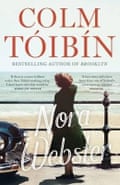
10 Nora Webster (2014)
This dispatch from what we might call the extended Colm Tóibín universe is set near the same time and in the same place as his earlier novel Brooklyn (one character appears in both books). It’s the story of a widowed woman who struggles to cope with life after love. If it lacks the drama of some of Tóibín’s other novels, the style is impeccable as ever, with irresistibly clean prose that reports emotional turmoil masked by restraint. There is no ornate showing off. “People used to tease me for it, saying: ‘Could you write a longer sentence?’” Tóibín has said. “But there’s nothing I can do about it.”
9 The Testament of Mary (2012)
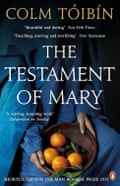
This short novel began as a play, which later became a Broadway flop. Tourists, observed Tóibín, are “going to take in only one Broadway show, and Bette Midler had just opened around the corner”. Jesus’s mother Mary is recalling the events around his crucifixion. Tóibín’s Mary is not meek and mild, but hardened by her experience, suspicious of his miracles and despairing of the followers who will take her son away from her. This is a rare first-person narrative for Tóibín, and his quiet style sometimes muffles the emotions Mary feels at Jesus’s suffering. In the end it’s a book not just about biblical figures, but about how strange our children become to us.
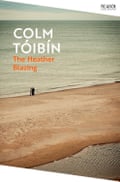
8 The Heather Blazing (1992)
Tóibín’s second novel shows that his “deadpan” style was there from the start: “you’re never sure where the laughter is going to come from or where the sadness is”, as he described it to the Paris Review. There’s more sadness here than laughter – apart from the joke that it always seems to be raining. It’s the story of High Court judge Eamon Redmond, a conservative man in 1980s Ireland, where the next generation – including his children – is agitating for reform on social issues such as divorce and abortion. This book is also, says Tóibín, “the most direct telling of the grief and numbness” he felt as a child at his “abandonment” when his mother left the family for many months to attend his sick father in hospital.
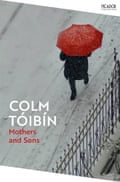
7 Mothers and Sons (2006)
Tóibín’s motto might be: If it’s not one thing, it’s your mother. Redoubtable mothers loom large in his work, and this is a whole book of stories about mothers and their sons. The best are novella-length – Tóibín is a novelist at heart – including one which features early appearances of Nancy and Jim from Brooklyn. These are stories of complicated love, laced with dark comedy. In one, a gangster with a drunken mother is selling stolen paintings to two Dutch criminals. One of the men, his associate tells him, “could kill you in one second with his bare hands”. “Which of them?” he asks. “That’s the problem,” comes the reply. “I don’t know.”

6 The Story of the Night (1996)
If Tóibín’s fiction tends toward low-key gloom, this novel about a gay Argentinian man of English ancestry is his happiest. Richard Garay frequently enjoys himself, especially now that his mother is dead. There’s a gusto in his resentment of her (“I am using, with particular relish, the heavy cotton sheets she was saving for some special occasion”) and an animal delight in his appreciation of the bodies of the men he loves. Even the darker stuff here – abductions, the fallout of the Falklands war – is described with almost cheerful energy.
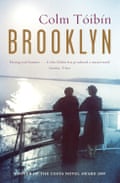
5 Brooklyn (2009)
It catapulted Tóibín from acclaimed literary novelist to bestseller, with the story of Eilis Lacey, a young woman in 1950s Ireland who seems utterly passive in her life. At least, that is, until she goes to the US – the sea crossing is a comic highlight, featuring motion sickness and a shared bathroom – and defies her family’s plans for her. Tóibín’s sensitive touch means Eilis feels like a real person, even when we want to give her a good shake. Adapted into a film in 2015 starring Saoirse Ronan, Brooklyn delivers satisfying emotional tension despite its restrained heroine. It’s little wonder it has become Tóibín’s best-loved book.
after newsletter promotion
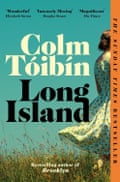
4 Long Island (2024)
Last year’s sequel to Brooklyn takes up Eilis’s story 20 years on. It’s a more rounded novel, with a greater range of characters fully on display, and Eilis seems to have found some bottle in the intervening years. “Can you not control her?” her brother-in-law asks her husband, when she argues with their father. It’s also a portrait of a changing Ireland in the 1970s. And although Tóibín dislikes traditional historical fiction (“I hate people ‘capturing the period’”), he does capture the period beautifully, with a wealth of detail – including the introduction of the toasted cheese sandwich to Ireland’s pubs.

3 The Blackwater Lightship (1999)
Tóibín’s fourth novel is clear, contained and complex. It is set in his literary comfort zone of coastal County Wexford, but there’s nothing complacent about this story, where traditional Ireland – singalongs with bodhrán drums – meets the modern crisis of Aids. It tells of three generations of women trying to get along together as a young man in their family dies. But it is also an acutely observed portrait of parenting young children (more mothers and sons), a retelling of the Greek myth of Orestes, Electra and Clytemnestra, and a rendering of Tóibín’s own childhood suffering around the sickness and death of his father. “I think if you’re not working, as a novelist, from some level of subconscious pain,” he has said, “then a thinness will get into your book.”
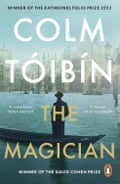
2 The Magician (2021)
Tóibín’s longest novel is also one of his most gripping. This book about Thomas Mann is an exceptional achievement in imaginative empathy, covering six decades of the writer’s life: his self-regard, his literary genius, and the concealed love for beautiful young men that he subsumed into works such as Death in Venice. Tóibín shows Mann as calcified by his public austerity (at his mother’s funeral, his daughter sees him cry for the first time). Tóibín likes to poke fun at his own austere reputation. He writes, he once said, on a chair that is “one of the most uncomfortable ever made. After a day’s work, it causes pain in parts of the body you did not know existed” – but “it keeps me awake”.
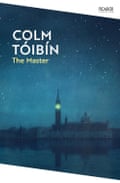
1 The Master (2004)
Tóibín’s masterpiece – to date – explores the inner life of Henry James, a man who was “a mass of ambiguities”. The novel covers five years in James’s life, beginning with the failure of his 1895 play Guy Domville, but its scope is vast, teasing apart the public and private man. “Everyone he knew carried within them the aura of another life which was half secret and half open, to be known about but not mentioned.” James loves gossip and secrets but keeps his own hidden. “It was the closest he had come,” he recalls, thinking of one abandoned episode of attraction to another man, “but he had not come close at all.” The Master is subtle, funny, ingenious and emotionally wrenching. Tóibín even took enough influence from James to – finally – write in long sentences.

 3 months ago
50
3 months ago
50

















































